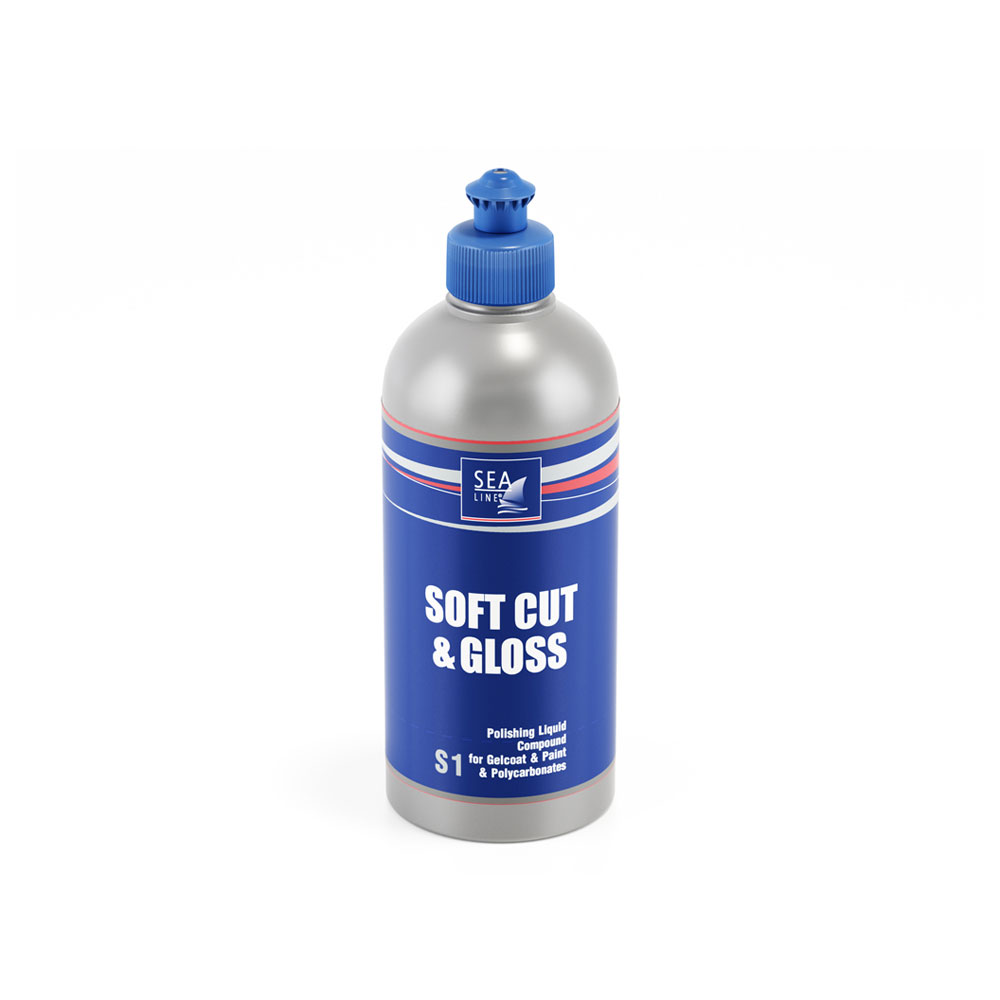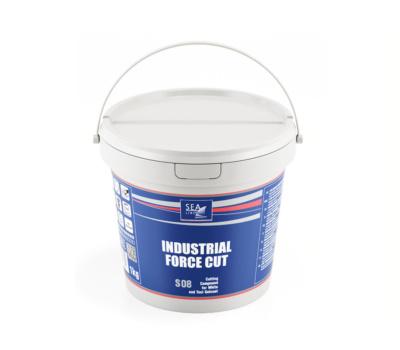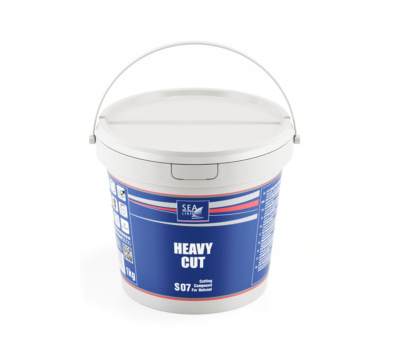S1 SOFT CUT & GLOSS – Polishing paste thanks to its versatility can be used in industrial as well as DIY use.
This is a perfect product for charter companies or private boat owners which have to restore gloss on different type of surfaces. The paste does not contain wax and silicone fillers.
| Weight | Code |
|---|---|
| 500 g | 300005578 |

No silicone
| Surface | gelcoat, polyurethane paints nad varnishes, plexi, polycarbonate | |||
| Function | removing defects from the surface gloss restoring | |||
| Consistency | liquid – creame paste | |||
| UV resistance level | very low | |||
| Surface preparation * | mechanical grinding | manual grinding | ||
| light color | dark color | light color | dark color | |
| gelcoat | P1200 ⇒ | P1500 ⇒ | P1500 ⇒ | P2000 ⇒ |
| polyurethane paint | P1200 ⇒ | P1500 ⇒ | P1500 ⇒ | P2000 ⇒ |
| plexi, polycarbonate | P2000 ⇒ | P2000 ⇒ | P2000 ⇒ | P2000 ⇒ |
| high hardness surfaces | P1500 ⇒ | P2000 ⇒ | P2000 ⇒ | P2000 ⇒ |

Polishing systems meet all stages of production, as well as during repair work, renovations or

Primarily designed for the companies which produce goods or forms made of gelcoat or an

S07 Heavy Cut Sea-Line is specialistic polishing paste with a very high cutting force which

S0 polishing compound Sea-Line is a polishing paste is designed for professionals – manufacturers, shipyards
It is not recommended to apply 2K paints over 1K paints. 1K and 2K inks differ in their composition and properties, including hardness, chemical resistance and durability. 1K paints are one-component and dry by evaporating the solvent, while 2K paints are two-component and need to be cured by adding a hardener. Applying 2K paint over 1K paint can cause unpredictable chemical reactions and lead to undesirable effects such as dulling, chipping or flaking of the paint. Therefore, always use paints according to the manufacturer’s instructions and do not mix different types of paints. farby zgodnie z instrukcjami producenta i nie mieszać różnych rodzajów farb.